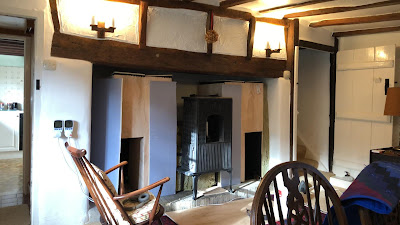The lemon grove at the creperie: Maths behind economic intuition
There are a lot of things we have an intuition about in economics. If you haven't studied it you might not realise these often have a mathematical formalism.
Two farms
Take the following example I got from a blog
Having two farms that can be harvested in six months isn't equal to having one farm that can be harvested in three months and another that can be harvested in nine months. How do I take into account the amount of time involved?
So intuitively there is a benefit from having a smaller output after a shorter time, but how do we quantify how much better it is?
This is where a concept called discounting comes in. Discounting allows you to calculate the value of things based on how you value money now compared to in a years time.
If I offered you £100 now, I'd not be surprised if you took me up on the offer. If, however, I give you a second option, I'll give you £x in exactly a years time.
How much would I have to give you in a years time for you to choose to take the money in a year rather than now? Would you choose £99 in a years time over £100 now? I should hope not (Certainly not without substantially negative interest rates).
£100? Perhaps you aren't good with money and since I'd be keeping the £100 safe for the year it would be worth it. (Would be a good option if the base rate was substantially negative)
£101?
£102?
£103?
£115?
£200?
Whatever you're number divide it by 100 and you get your multiplier. This is your discounting factor, this is what we will use in the calculation.
How do we work out which farm is worth more? - For the sake of simplicity we'll assume the price of our harvest is stable.
Take your discounting factor, d. This is for a year.
Are they really free though?
I was making myself pancakes today and wondering about the cost of a sugar and lemon pancake. The most expensive ingredient is by far the lemon. I was wondering about a situation where I hosted a creperie which had a lemon garden. Clearly, there is a limit to the number of lemons I get from the garden but ignoring other costs of maintaining the garden the lemons seem free. How do we take into account the cost of the lemons when trying to price the crepes.
One solution is to consider how much lemons would be if we didn't get them free and price them accordingly. That would allow us to expand the supply of pancakes indefinitely as we can buy away any shortage of lemons we have.
I want to talk about another way we can price the lemons in because it has a lot of implications for other aspects of economic activity. Opportunity cost.
Opportunity cost was defined to me in A level economics as "The benefit foregone of the next best alternative". That was what the mark scheme said the answer to the question was and as such we learnt it by rote. I'm not sure it's the best explanation though.
If we are growing our lemon trees on a plot of land behind our creperie we could instead be growing something else or using the land to expand the garden of the creperie to fit more customers in.
That would require that we buy in all the lemons we need but if the extra customers would make up for the cost then it might be worth it.
Putting some numbers to how we calculated this we might say:
- The yield of the lemon grove is 1000 lemons/year
- Lemons cost 20p/lemon on the market
- We could serve 10 more customers/day, which we would only need to do over the peak season lasting 3 months. This is where we otherwise don't have enough seating. That works out to 900 more customers than we otherwise would have.
If on average we get more than 23p of revenue per customer then the lemons from our grove aren't free they do have a cost.
1000 lemons/year *£.2/lemon - 900 (extra)customers/year * £1/customer = £500
With those assumptions, the lemons are costing us the opportunity to earn £900 a year.
Since buying them would only cost £200/year we would be £500 better off not making use of our lemon grove.
Clearly, this is the sort of contrived example that economics likes to use and the are numerous ways in which the lemon grove is more valuable than it's lemon yield alone.
I do think, however, that it gives an example of how we can calculate the cost (accounting cost + opportunity cost) of things we might otherwise disregard because we are getting them on the cheap or free.


Comments
Post a Comment